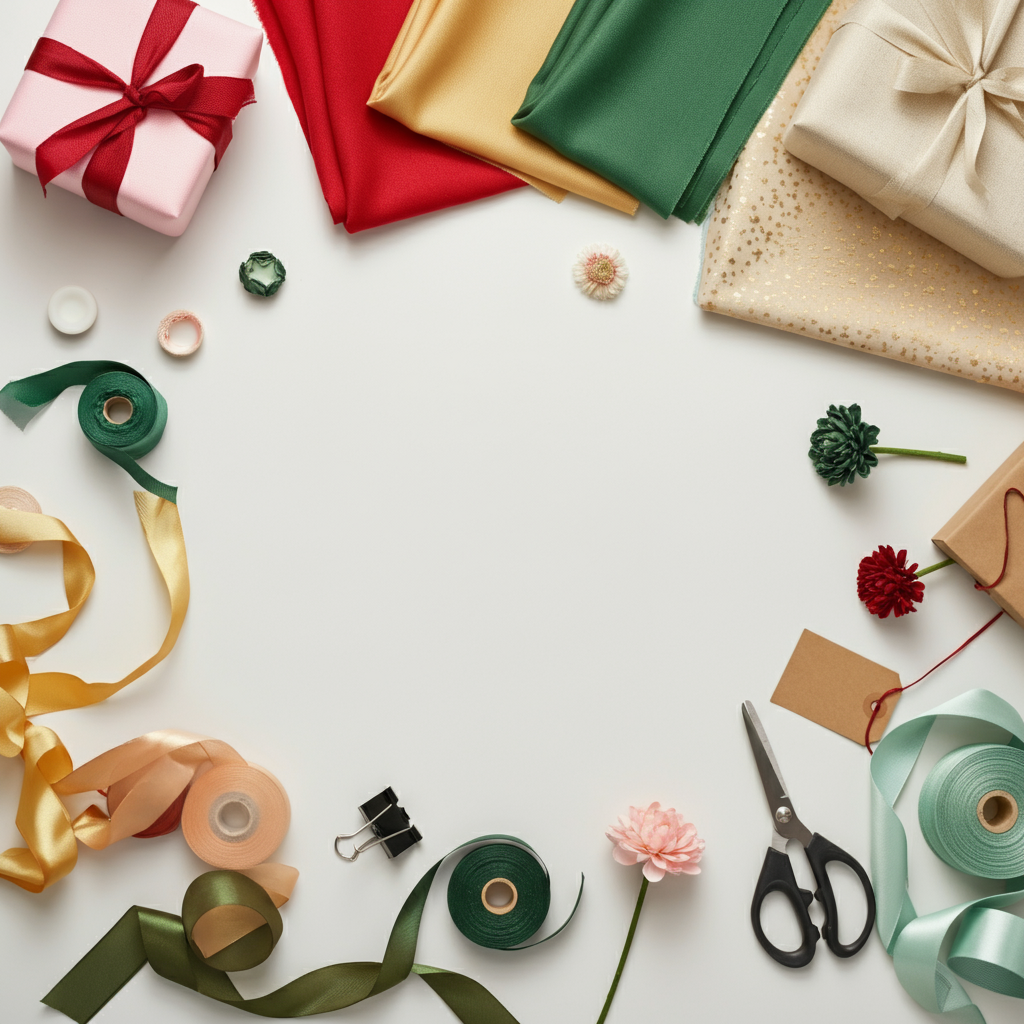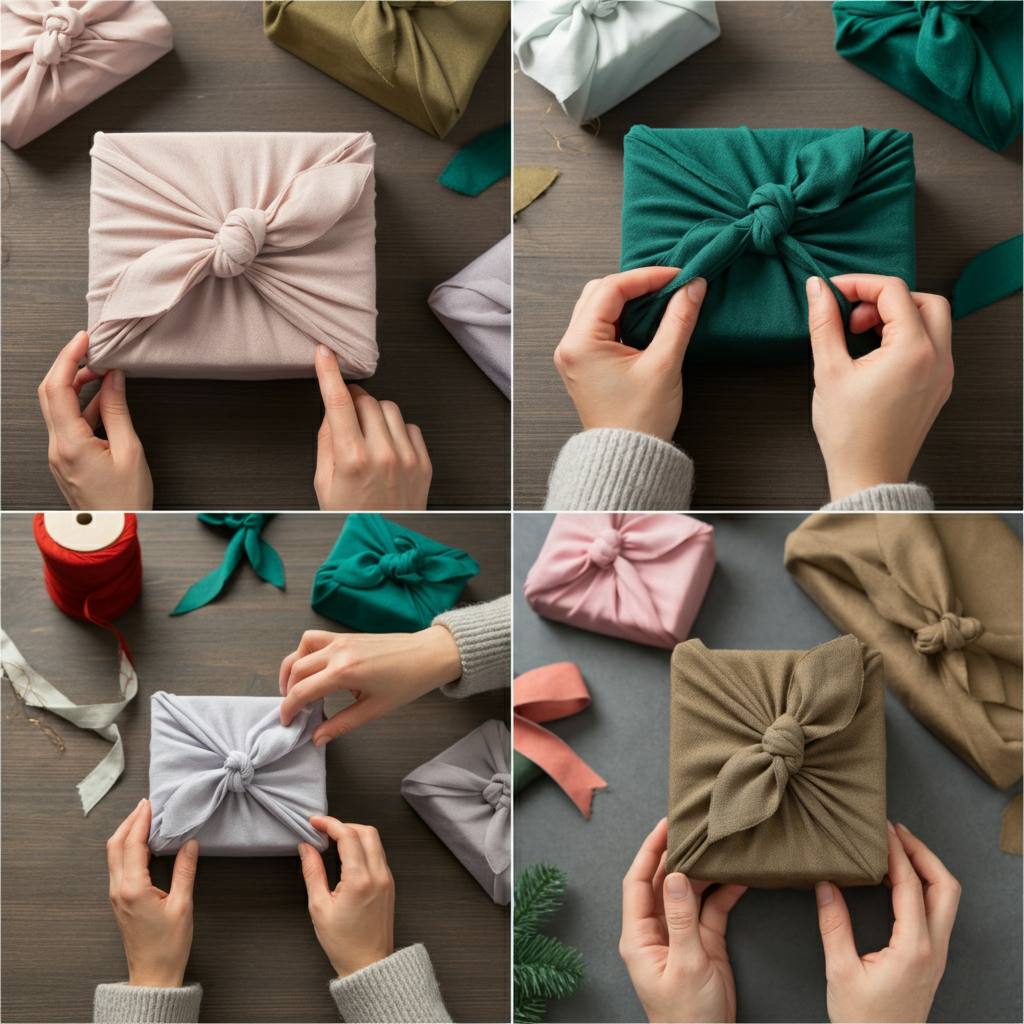Looking to make your gift-giving more thoughtful, creative, and eco-friendly? Say hello to the art of fabric wrapping! This sustainable gift-wrapping technique, rooted in the traditional Japanese art of Furoshiki, has gained global attention for its charm and versatility. Whether you’re wrapping for a birthday, wedding, or the holidays, reusable fabric wraps are both practical and beautiful.
This comprehensive guide will cover everything you need to know about fabric wrapping, from its origins to step-by-step techniques and creative ideas, ensuring you’re fully equipped to make the switch to this sustainable tradition.
What is Fabric Wrapping?
Fabric wrapping is the art of using cloth to wrap gifts instead of paper. Originating in Japan with the practice of Furoshiki, it was historically used to carry personal belongings and bundle items securely. Today, it has evolved into a popular method of eco-friendly gift wrapping, offering sustainability and a unique aesthetic touch.
By swapping paper for fabric, gift-givers take a step toward reducing waste while celebrating the creativity and thoughtfulness associated with wrapping gifts.
Why Choose Fabric Wrapping?
Still debating on whether to make the switch? Here are some compelling reasons why fabric wrapping might become your favorite go-to approach:
Eco-Friendliness
Traditional wrapping paper often creates significant waste, especially during holidays. Most paper wraps, with their coatings and glitter, are non-recyclable. Fabric wrapping reduces this environmental burden since it’s reusable for years. A single wrapped gift using fabric could save multiple rolls of paper over time.
Cost-Effectiveness
While fabric might seem pricier upfront, its reusability makes it a cost-effective choice in the long run. Instead of buying new rolls of paper for every occasion, you end up with versatile reusable wraps.
Aesthetics
Fabric has unmatched charm, offering texture and richness that traditional paper lacks. From delicate silk to bold patterns, fabric wrapping creates a stunning, memorable presentation.
Versatility
Unlike paper, fabric wraps adapt to a variety of gift shapes and sizes. From bottles to books to oddly shaped items, there’s a wrapping technique for everything.
Materials Needed for Fabric Wrapping

To get started with fabric wrapping, you’ll need a few essentials:
Types of Fabric
- Cotton: Lightweight and breathable, ideal for everyday wrapping.
- Silk: Adds elegance and is perfect for special occasions.
- Linen: Provides a natural, textured look.
- Fabric Blends: Often more affordable and durable than natural fabrics.
Fabric Size
The size of the fabric depends on the gift’s size. A good rule of thumb is to use fabric that’s roughly three times the size of the object you’re wrapping.
Optional Embellishments
- Ribbons, Twine, or String: Add visual interest and secure loose folds.
- Buttons or Charms: A small personal detail goes a long way.
- Natural Foliage: Such as sprigs of rosemary or eucalyptus for a rustic touch.
Step-by-Step Guide to Fabric Wrapping
Here’s how to wrap various types of gifts using fabric:
The Basic Wrap
- Lay your fabric flat, pattern side down.
- Place your gift in the center.
- Fold the fabric edges over the gift like you would with paper wrapping.
- Secure by tying two opposite corners together in a double knot.
The Knot Wrap
- Place your gift diagonally on the fabric.
- Pull two opposite corners and tie a knot in the center.
- Pull the remaining corners and tie another knot over the first.
The Bag Wrap
- Use fabric with a long rectangular shape.
- Wrap the gift entirely and twist the ends to resemble a handle.
- Secure with a ribbon or knot.
Advanced Techniques and Creative Ideas
To make your fabric wraps truly Instagram-worthy, try these creative tips:
- Mix and match patterns and colors for a layered effect.
- Add small embellishments like beads or foliage for extra flair.
- Use fabric scraps to create patchwork designs over your wraps.
Fabric Wrapping for Special Occasions
This technique isn’t limited to everyday gifting. It works beautifully for various occasions:
- Holidays: Wrap Christmas gifts with cheerful patterns or trendy plaid.
- Weddings: Use elegant silk or monogrammed fabric for wedding favors.
- Corporate Events: Enhance branding with custom-printed fabric.
Caring for Your Fabric Wraps
Proper care ensures longevity for your fabric wraps:
- Washing: Stick to gentle detergents and hand washing to preserve the fabric’s quality.
- Ironing: Always iron fabric wraps before use to ensure a smooth, clean look.
- Storage: Fold and store neatly in a box or drawer to prevent wrinkles or dust accumulation.
Where to Buy Fabric for Wrapping
If you’re looking to stock up on fabric for wrapping, consider these options:
- Local Fabric Stores: Great for selecting fabrics in person.
- Online Retailers: Amazon, Etsy, and specialty eco-stores offer a wide variety.
- Upcycling: Repurpose scarves, old clothes, or fabric remnants for a sustainable choice.
The Cultural Significance of Fabric Wrapping
Its Japanese origins date back to the Edo period, where Furoshiki was commonly used for carrying goods. Today, this practice has been adapted worldwide as a sustainable and stylish wrapping alternative.
Fabric Wrapping vs Traditional Wrapping Paper
Environmental Impact
- Fabric Wrapping: Reusable and sustainable.
- Wrapping Paper: Often single-use, with limited recyclability.
Cost Analysis
- Fabric is a long-term investment, while paper is an ongoing expense.
Aesthetic Appeal
- Fabric offers unique textures and colors that elevate the presentation.
Convenience
- Paper is disposable, but fabric is adaptable and reusable.
Troubleshooting Common Issues
Fabric is Too Small
Layer fabric pieces or use embellishments to secure small edges.
Knots Come Undone
Double knot for extra stability or secure with decorative pins.
Wrinkled Fabric
Iron before use, or choose patterns that hide small imperfections.
Fabric Wrapping Ideas for Different Types of Gifts
- Books and Stationery: Use a simple knot wrap.
- Food Items: Secure glass jars or wine bottles with the bag wrap technique.
- Clothing and Accessories: Roll items and tie a decorative ribbon.
Share Your Wrapping Story
Many enthusiasts find joy in sharing their fabric wrapping creations. Why not join them? Document your designs and post them online to inspire others!
Final Thoughts on Fabric Wrapping
Switching to fabric wrapping is more than adopting a trend. It’s about making a conscious choice to reduce waste, add thoughtfulness to your gifts, and celebrate the beauty of sustainable living.
By wrapping with fabric, you’re not only presenting a gift but sharing a story of mindfulness and artistry.
Interested in making the switch? Grab some fabric today and start your sustainable wrapping journey!
